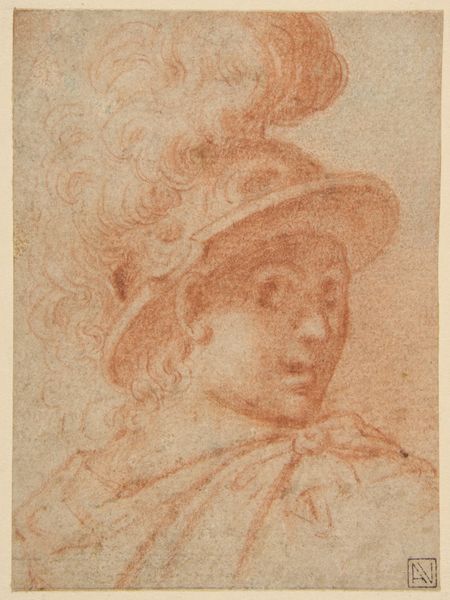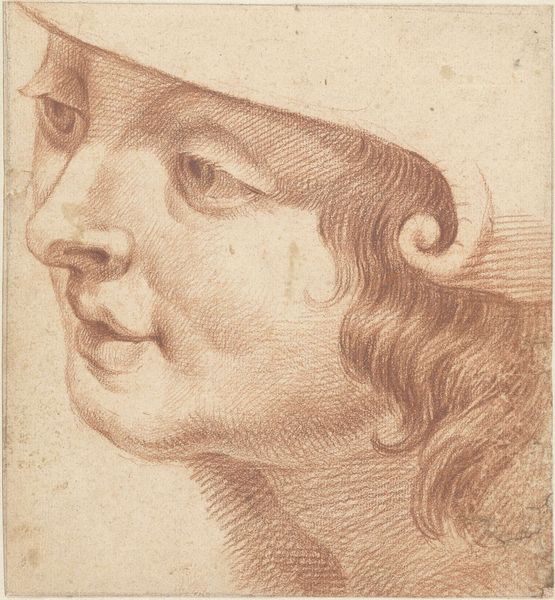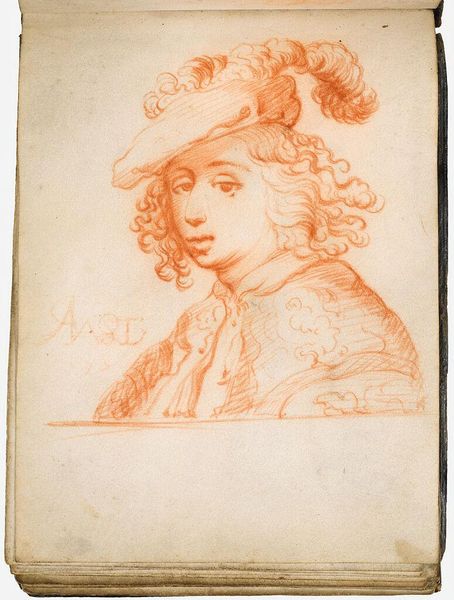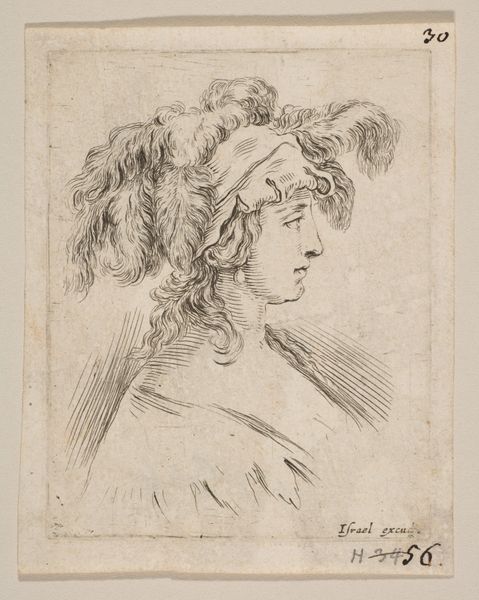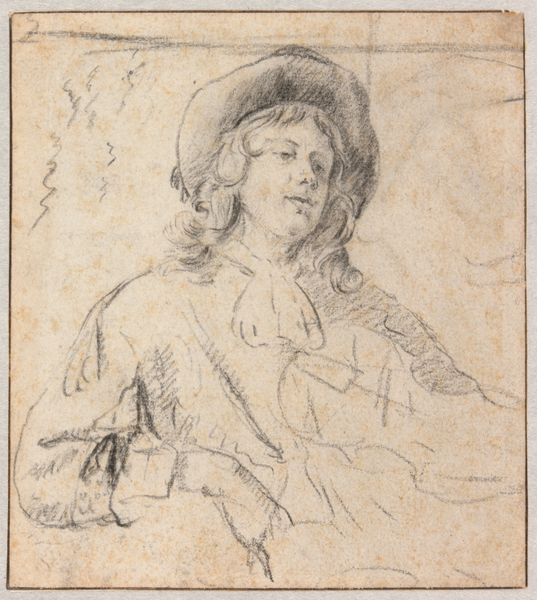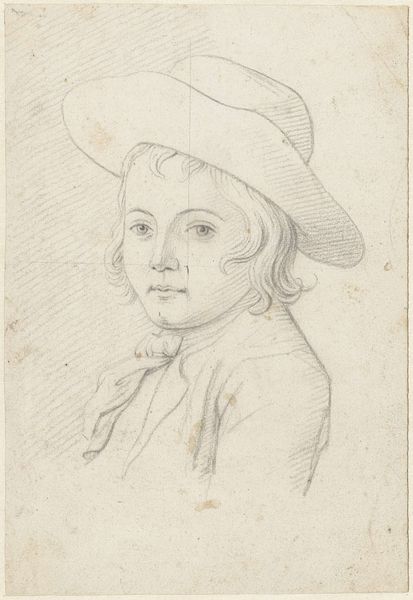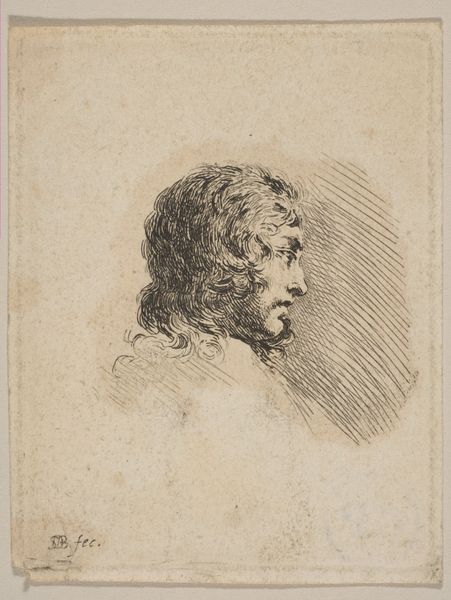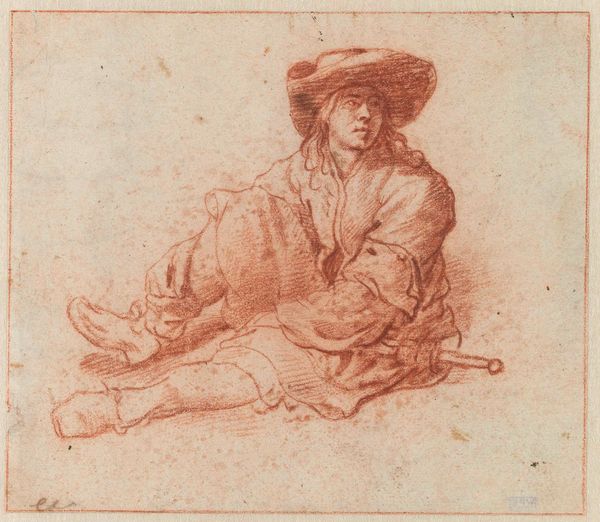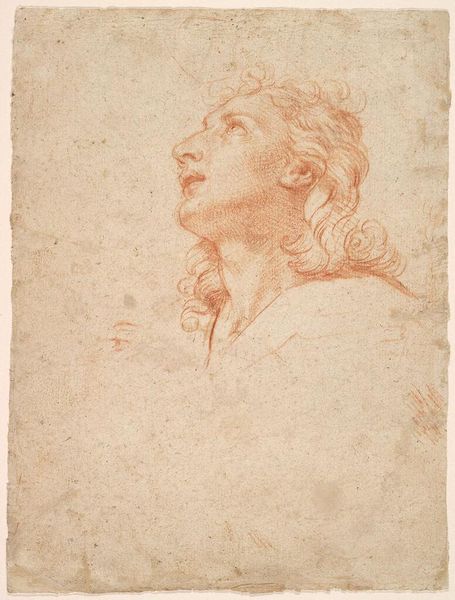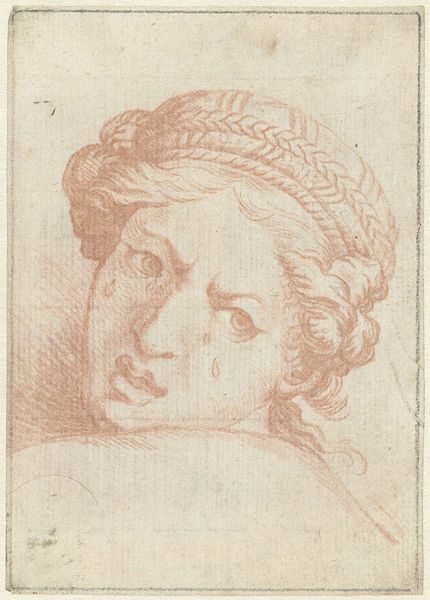
drawing, dry-media
#
portrait
#
drawing
#
dry-media
#
romanticism
#
line
#
portrait drawing
Dimensions: height 175 mm, width 149 mm
Copyright: Rijks Museum: Open Domain
Editor: This is "Head of a Boy with a Large Hat," a dry-media drawing by Jordanus Hoorn, likely made between 1763 and 1833. The delicate lines create such a gentle, almost wistful portrait. How should we approach understanding a piece like this? Curator: Considering it as a material object lets us question assumptions about "high art". What kind of dry media did Hoorn use, and what would that have cost at the time? The access to the paper itself represents a societal privilege. Was this preparatory sketch, or was it meant to be seen and valued as a finished work of art? Editor: So, thinking about it less as a Romantic portrait and more as a product of its time? Curator: Precisely. Romanticism emphasized emotion and individualism, but those ideas are transmitted through material means. How does the *way* the drawing was made, the cost of materials and the artist's labor, inform our understanding of that emotion? Also, think of who consumed and traded the artwork back then and how those people would feel towards it. Editor: That's a different way of looking at it, since I have always focused on the final artwork, the "what" instead of the "how". So, if we researched the paper and the drawing implements from that time, we could have a better sense of who this boy, or the artist, was? Curator: It gives us a concrete point of entry. The labor involved and the materials used also connect to wider economic and social structures of the 18th and 19th centuries. Think of this artwork not only as an aesthetic object, but as a commodity. Editor: I see. It moves beyond simply admiring the artistry, to thinking about it in its socio-economic context. That adds another whole layer to its story. Thank you! Curator: Absolutely. Understanding the process deepens our appreciation.
Comments
No comments
Be the first to comment and join the conversation on the ultimate creative platform.
